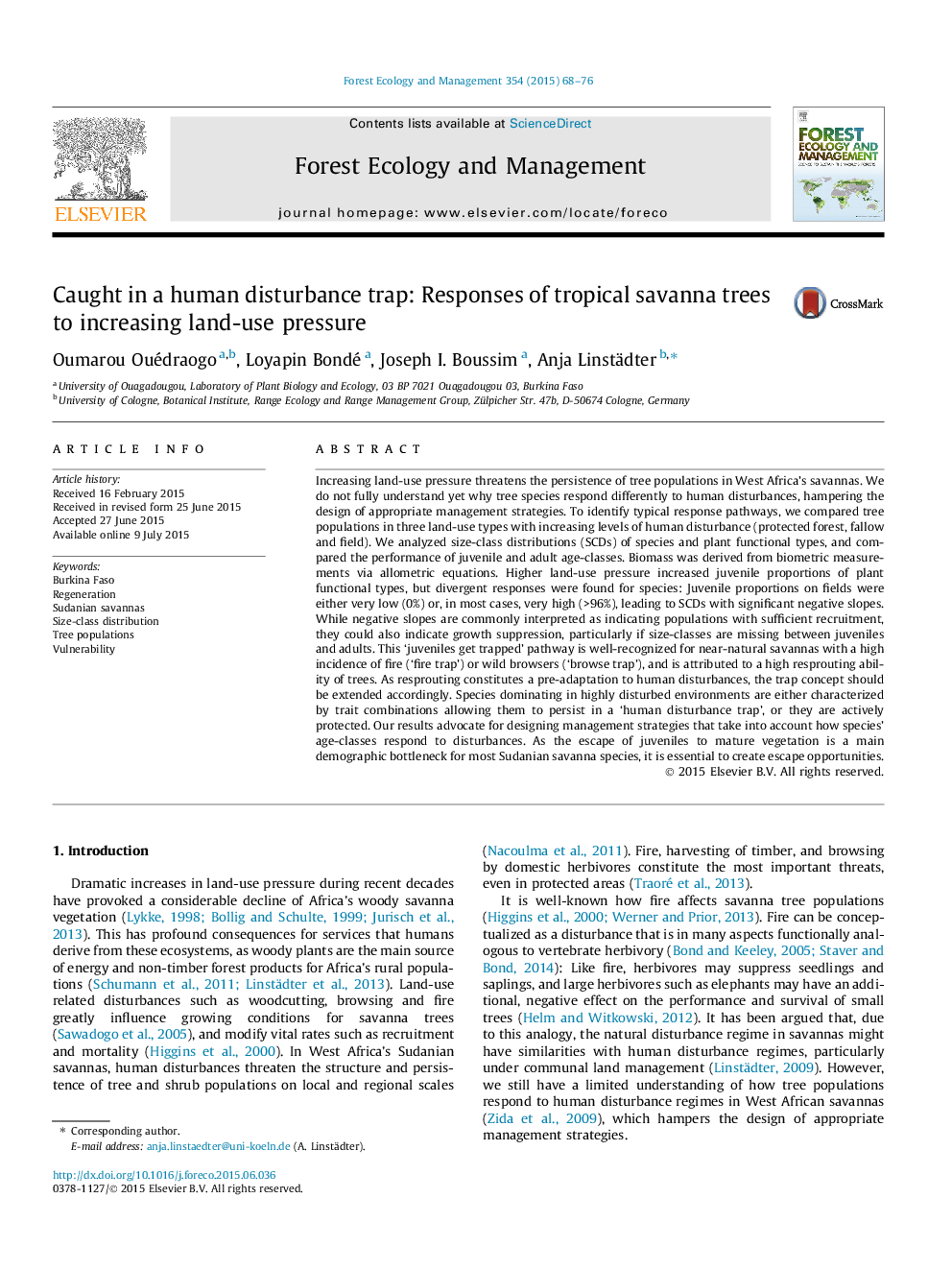| کد مقاله | کد نشریه | سال انتشار | مقاله انگلیسی | نسخه تمام متن |
|---|---|---|---|---|
| 86137 | 159168 | 2015 | 9 صفحه PDF | دانلود رایگان |
• Effects of human disturbance on tree populations are evaluated in Sudanian savannas.
• Small trees are suppressed (trapped) in all land-use types (forest, fallow, field).
• Size-class distribution analysis may misinterpret trapped populations as stable.
• Escape of saplings to mature vegetation is a demographic bottleneck for most species.
• Specific management strategies are required such as longer intervals between fires.
Increasing land-use pressure threatens the persistence of tree populations in West Africa’s savannas. We do not fully understand yet why tree species respond differently to human disturbances, hampering the design of appropriate management strategies. To identify typical response pathways, we compared tree populations in three land-use types with increasing levels of human disturbance (protected forest, fallow and field). We analyzed size-class distributions (SCDs) of species and plant functional types, and compared the performance of juvenile and adult age-classes. Biomass was derived from biometric measurements via allometric equations. Higher land-use pressure increased juvenile proportions of plant functional types, but divergent responses were found for species: Juvenile proportions on fields were either very low (0%) or, in most cases, very high (>96%), leading to SCDs with significant negative slopes. While negative slopes are commonly interpreted as indicating populations with sufficient recruitment, they could also indicate growth suppression, particularly if size-classes are missing between juveniles and adults. This ‘juveniles get trapped’ pathway is well-recognized for near-natural savannas with a high incidence of fire (‘fire trap’) or wild browsers (‘browse trap’), and is attributed to a high resprouting ability of trees. As resprouting constitutes a pre-adaptation to human disturbances, the trap concept should be extended accordingly. Species dominating in highly disturbed environments are either characterized by trait combinations allowing them to persist in a ‘human disturbance trap’, or they are actively protected. Our results advocate for designing management strategies that take into account how species’ age-classes respond to disturbances. As the escape of juveniles to mature vegetation is a main demographic bottleneck for most Sudanian savanna species, it is essential to create escape opportunities.
Journal: Forest Ecology and Management - Volume 354, 15 October 2015, Pages 68–76
